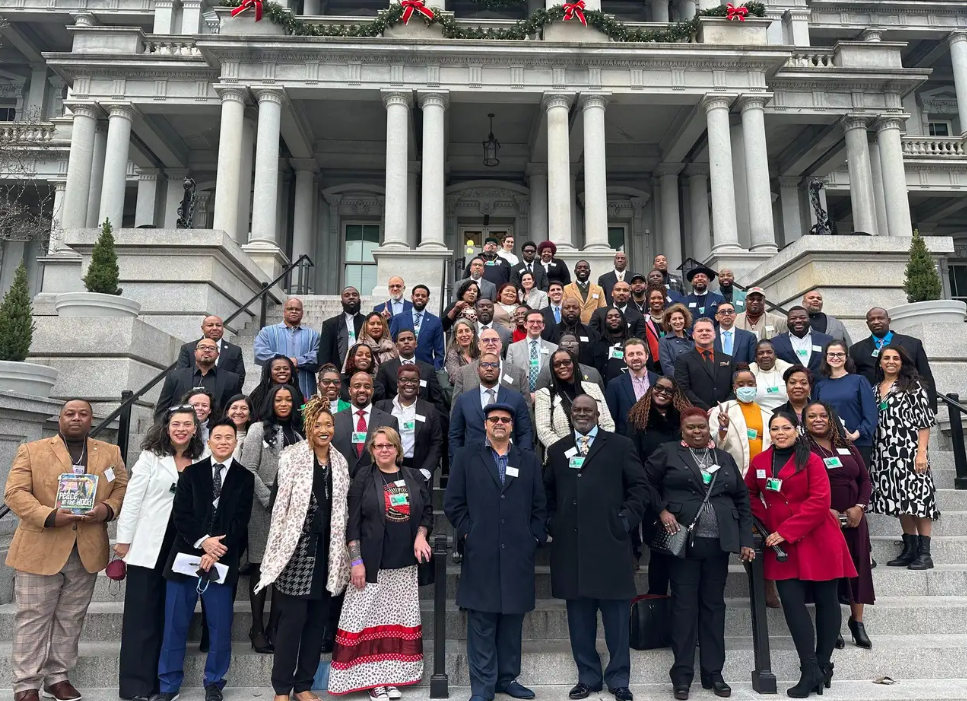Policing alone clearly isn’t keeping us safe, could investments in community-based public safety be the solution we’re all looking for?
 It’s no secret that we have a gun violence problem in the Untied States. Every year, tens of thousands of Americans die from gun-related injuries. And while historically, the solution has been to pour money into policing and prisons, the White House has quietly been working on something new.
It’s no secret that we have a gun violence problem in the Untied States. Every year, tens of thousands of Americans die from gun-related injuries. And while historically, the solution has been to pour money into policing and prisons, the White House has quietly been working on something new.
On Thursday, White House Domestic policy Advisor Susan Rice and White House Intergovernmental Affairs Director Julie Chávez Rodriguez convened the final meeting of the White House Community Violence Intervention Collaborative (CVIC).
The program, which has been training and funding community-based violence intervention programs in 16 localities across the United States, has mostly slipped under the radar. But for over a year and half, community violence intervention leaders have been receiving funding to the tune of $100 million and tactical support from the White House.
So what exactly is community violence interruption, and how does it make communities safer?
The idea, according to the initiative’s senior advisor Aqeela Sherrills, is to train members of the community to step-in before violence occurs.
“If we trained residents, as public safety professionals and trained them in conflict resolution and mediation and de escalation strategies, when conflicts arise, they can actually mediate these situations to a peaceful resolve before we even call the cops,” says Sherrills.
Sherrills says he doesn’t want to replace policing, but that what we’ve been doing thus far hasn’t worked. In order to create a more community-centered approach, CVIC has worked with local leaders to build financial and tactical support to violence interrupters and community members at risk of perpetuating violence within their community.
Making sure that violence interrupters have credibility with the people they’re working with is huge, says Sherrills. He says that he makes sure to hire “non traditional leaders, ex-gang members and ex-convicts” who can speak to people in communities at risk for violence.
Ensuring violence interrupters are prepared and compensated for their work is also incredibly important. Violence Interrupters are required to go through a 30 hour training course, says Sherrills.
“This work is extremely difficult…people lose their lives trying to mediate conflicts to a peaceful resolve,” he says. “So we need people to be highly trained and skilled in terms of leveraging their relationship capital in communities to prevent and treat violence as a public health issue.”
Moving away from expecting police to be the be all end all of public safety is a large part of the initiative, says Sherrills. “We expect them to be teachers, therapists, counselors, and lawyers,” says Sherills.
The results of having cops with firearms show-up in situations they’re ill-equipped to handle has been deadly.
In 2019, cops shot and killed Miles Hall after his mother called to get him help for a mental health crisis. And in 2018, police shot and killed Marcus David Peter, a 24-year-old Black highschool teacher who was suffering from a sudden-on set mental health crisis.
It’s clear that policing can’t be the only community safety strategy in place, says Archana Sahgal, Founder and President of Hyphen, a non-profit which has been coordinating the White House’s efforts with outside groups.
While it’s too soon for specific metrics, Sahgal says the plan is to watch gun violence numbers very closely.
“The ultimate benchmark for success is a reduction of gun violence in this country. That’s it full stop,” says Sahgal. “And you can see in places where there are strong community based public safety organizations—in places like Newark, in places like Baton Rouge—violence goes down.”.”
Sherills says that they have seen a lot of success with their community-based approach in Newark, New Jersey, one of the initiative cities where he’s been doing community-violence intervention work for the last six-years.
“We’ve had a tremendous amount of success in Newark alone,” says Sherrills. “We’ve now had six consecutive years in a row of decreases of homicide and overall violence. We’ve literally removed Newark from the top 10 was by the city list, where it had a coveted position for almost 50 consecutive years.”
In Newark and in the 16 other localities that came together for the collaborative the work on the ground will continue after the initiative comes to a close.
The White House also has plans to continue investing in community violence intervention. Biden has asked for $500 million in community violence intervention money in the next budget, according to Politico.
“We have to be diligent and continue to make the case to appropriators, to the public, that these programs are a critical piece of the puzzle in saving lives and reducing gun violence,” said White House policy adviser Stefanie Feldman told Politico. “The Biden administration is going to continue to talk about community violence intervention, put our money where our mouth is, and definitely keep the foot on the gas pedal.”
Years down the road, it will be interesting to see how community-interventions worked, especially as we become more disillusioned with traditional policing.
